

Josh Nevett
2025 GWM Haval H6 review
1 Month Ago
If you thought Toyota's SUV range was a little stale, the new all-hybrid C-HR brings visual drama and attainable luxuries... at a price.
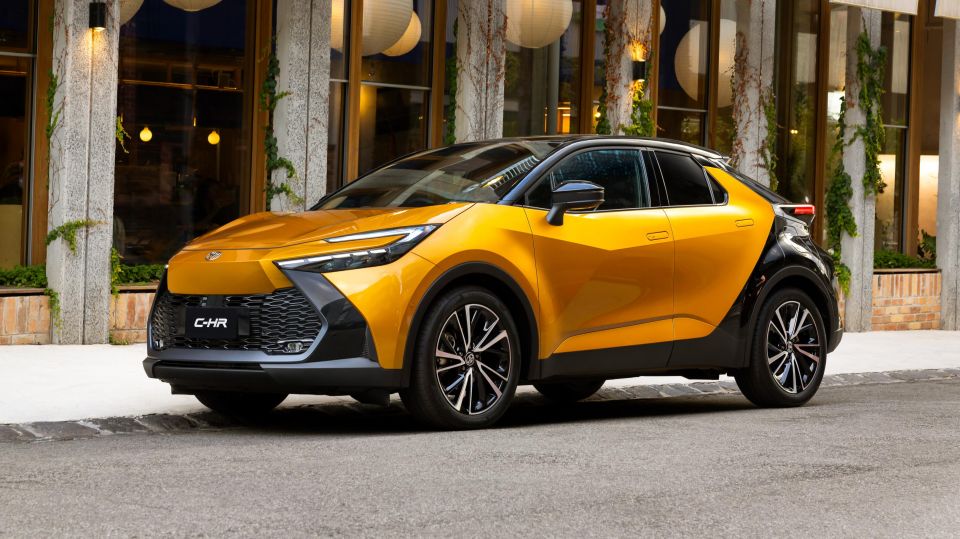
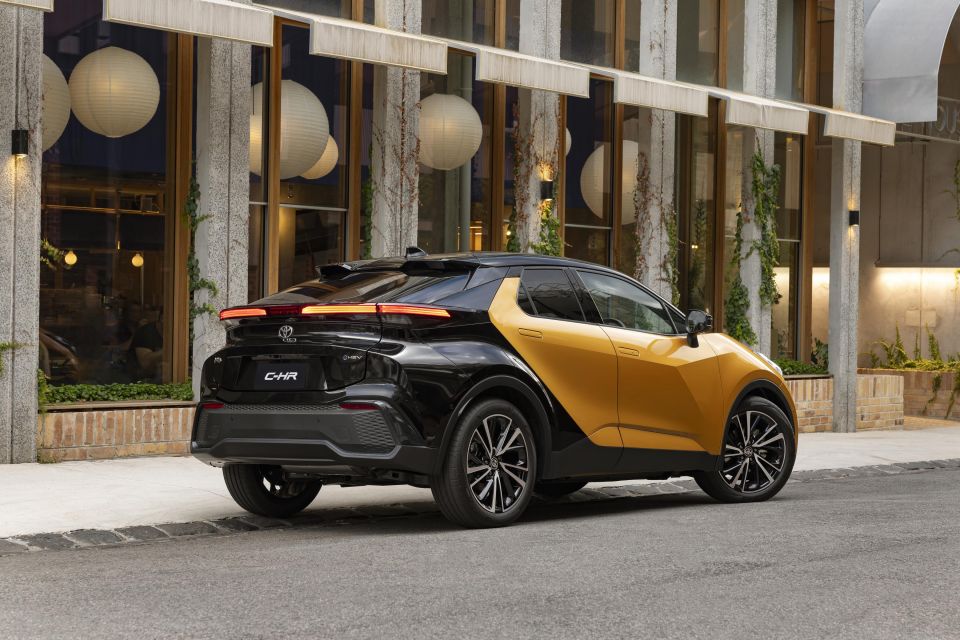

Quickly see how this car stacks up against its competition. Select any benchmark to see more details.
Where expert car reviews meet expert car buying – CarExpert gives you trusted advice, personalised service and real savings on your next new car.
Toyota’s quirky little C-HR crossover has just been renewed for a second season.

The Toyota C-HR broke the brand’s rather conservative mould when it launched in 2016, taking the underpinnings of the top-selling Corolla and turning them into a coupe-styled crossover with turbo petrol and hybrid options.
It didn’t launch in Australia until 2017, and added the hybrid option to the local range when the facelifted model arrived in October 2019.
Some 53,271 units of the first-generation model have been sold in Australia, with a 42 per cent mix of hybrid sales since the option went on sale in 2019. The C-HR has been a hit abroad, taking the title of Toyota’s best selling hybrid in Europe.
Fast forward to today, and the second-generation is here sporting an even more avantgarde design than its predecessor and packing a hybrid-only lineup. Where the old model was sourced from Japan, the new one moves to Turkish production.
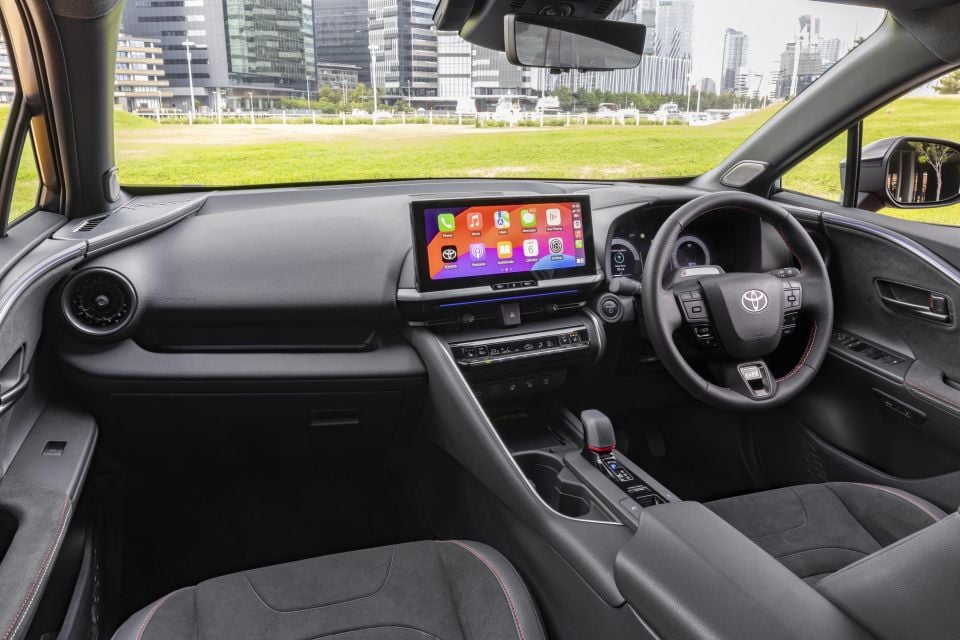
It arrives as a much more expensive proposition than before too, with the price of entry up by more than $10,000; and the top-spec GR Sport AWD is nudging the $60,000 mark on the road.
Has Toyota’s sporty little crossover coupe packed in enough upgrades to justify its higher pricing?
Prices are well up on the previous Japan-sourced model, with the entry point some $11,000 higher – but the new 2024 Toyota C-HR is better equipped as standard, and now comes out of Turkey.
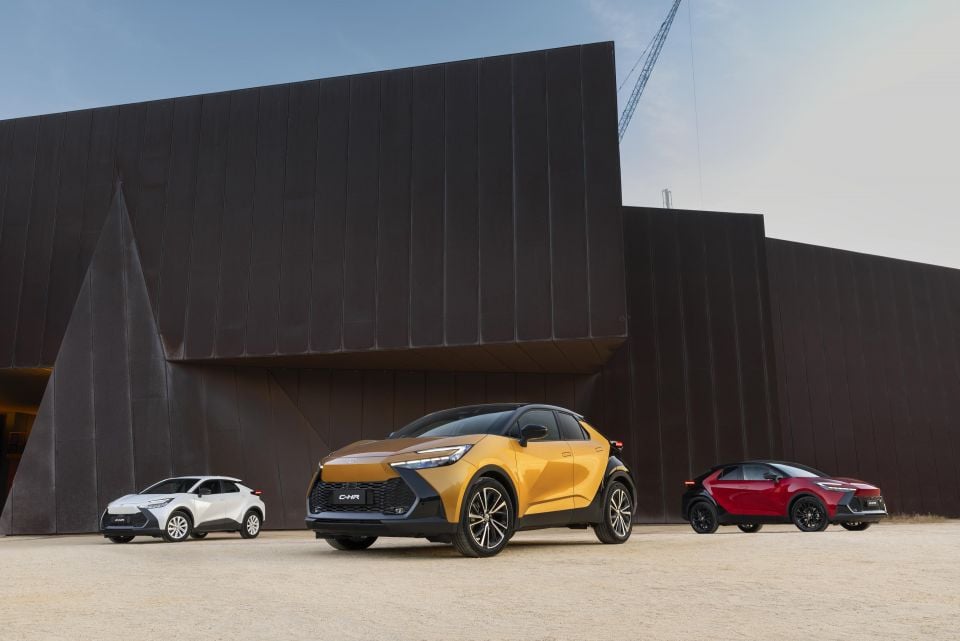
2024 Toyota C-HR pricing:
Prices exclude on-road costs
To see how the C-HR lines up against its rivals, check out our comparison tool.
Buy your new car without the stress. It's fast, simple and completely free.

Great service from Travis and team, second time I have used this business would not hesitate to recommend them to anyone
Craig C.
Purchased a Ford Ranger in Sunshine Coast, QLD
CarExpert helped Craig save $7,224 on his Ford Ranger, now let us save you on your next new car.
Get your BEST priceYou can’t accuse the C-HR of being dreary in the cabin like some of its stablemates. It’s actually rather fetching.
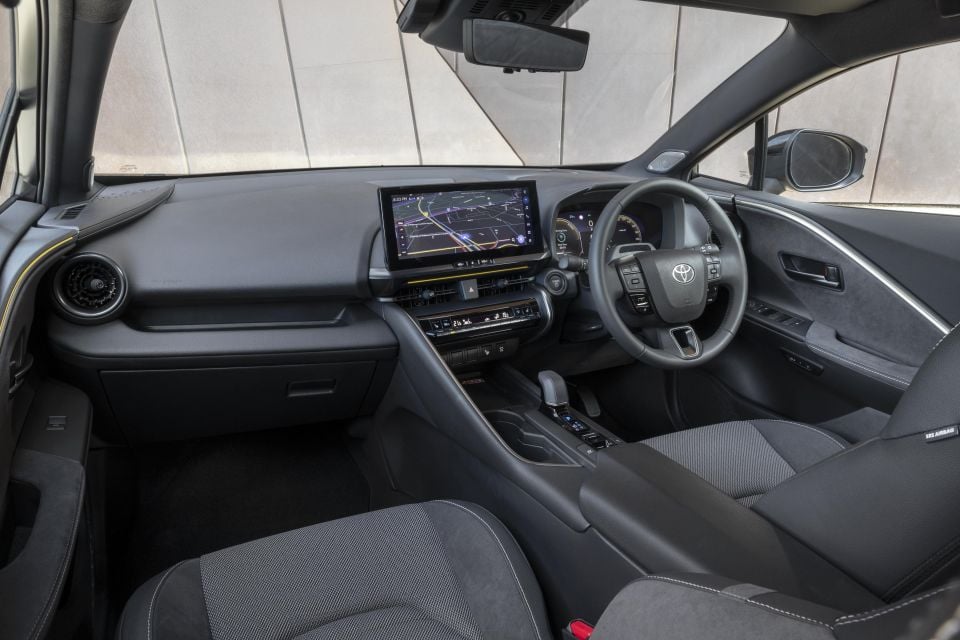
As the original pushed the boundaries for Toyota and blurred the lines with the luxury Lexus brand, the C-HR takes a lot of high-end appointments from more expensive vehicles and crams them into a compact cabin.
All models feature high-resolution 12.3-inch displays for the central touchscreen, running Toyota’s latest interface and fully featured in terms of connectivity and net-based services. The base GXL gets a 7.0-inch digital instrument cluster, while the Koba and GR Sport get Toyota’s flagship 12.3-inch digital cockpit.
It all looks and feels swish, and it’s presented in a cabin that’s quite driver-focused and nicely trimmed, especially compared to something like a RAV4 or Corolla Cross which are noticeably more utilitarian. Another nice touch is the colour head-up display standard on the Koba and GR Sport, which can be configured to show speed, assistance features and the like.
The sweeping dash and cockpit-style design also give off a sporting feel, and regardless of variant you get comfortable seats, heaps of adjustment, and premium-feeling materials which all have at least partial recycled properties.
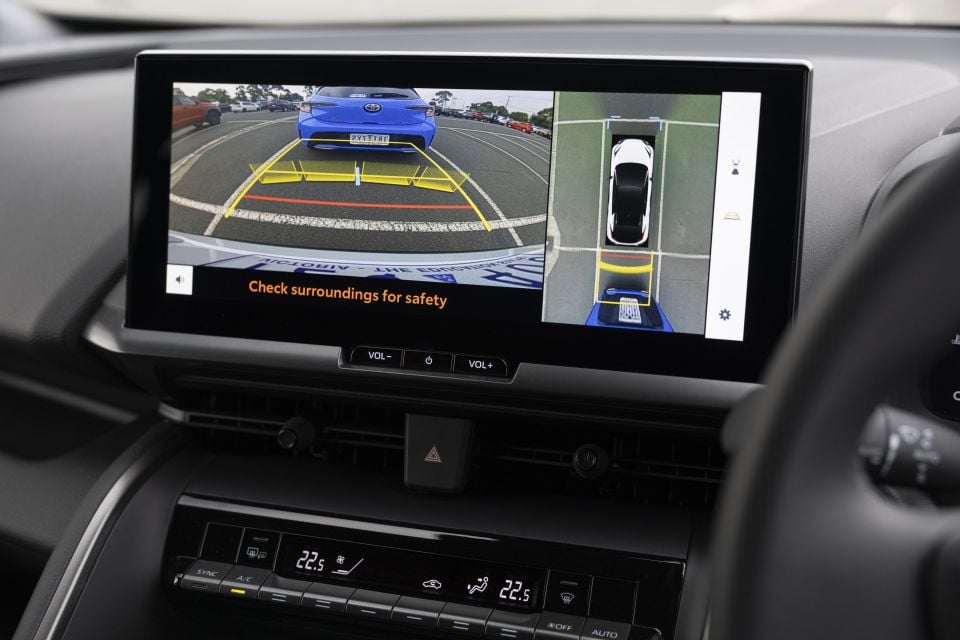
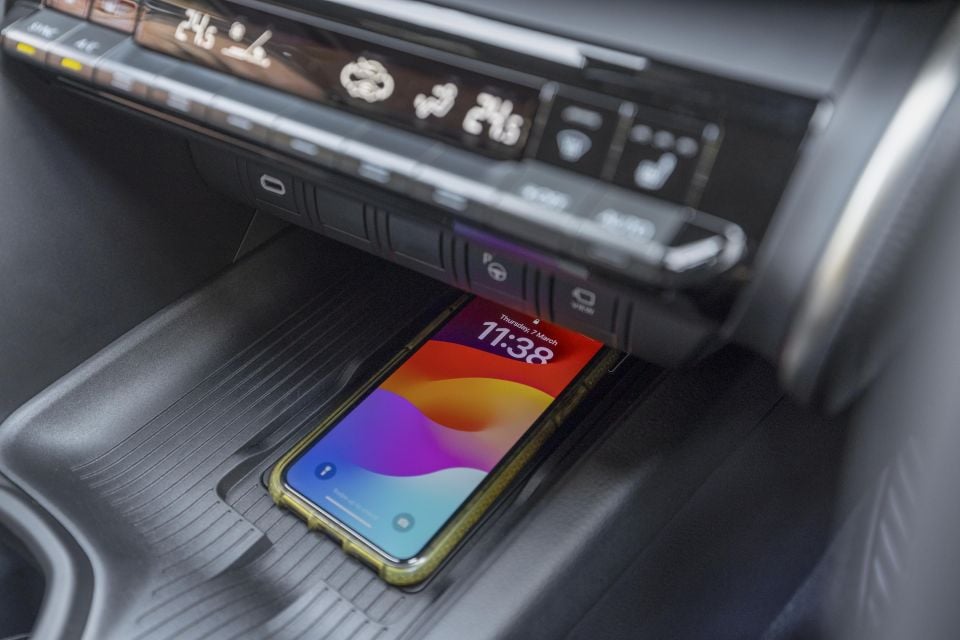
Toyota says the woven textile upholstery is made from 100 per cent recycled materials, while the suede bits in Koba and GR Sport models have 45 per cent recycled materials. PET bottles are a main ingredient of these.
Step up to the Koba and GR Sport and you also get lovely bucket-style sports seats with integrated headrests, power adjustment for the driver, as well as heating up front. Regardless, the available front seats are comfortable and offer good adjustment, as does the steering wheel.
It’s all quite functional. There are decent door bins to store bottles – though I don’t think a 1L Frank Green will squeeze in there – as well as a grippy phone holder that doubles as a wireless charger on the Koba and GR-S. There’s a big cubby under the centre armrest too, in addition to a shelf ahead of the front passenger.
Build quality feels pretty good across the board, and there’s a nice solidity to the action of the various buttons and controls littered throughout the cabin. We’re glad Toyota decided to retain physical switchgear for the most part, too.

The second row has never been a C-HR standout given its coupe-like styling, though it’s doable for shorter trips provided you don’t have nausea-prone passengers.
Leg- and knee room in particularly are on the snug side for taller passengers behind taller drivers, and there are limited amenities to go with the rising shoulder line that somewhat obstructs outward view for the vertically challenged.
You get cupholders in the doors, but that’s about it. There’s no fold-down centre armrest, no directional rear air vents, and no map pockets.
ISOFIX and top-tether points feature though, if you need to cart along your little ones. Koba and GR-S variants also pick up a USB-C charging port at the rear of the centre console.
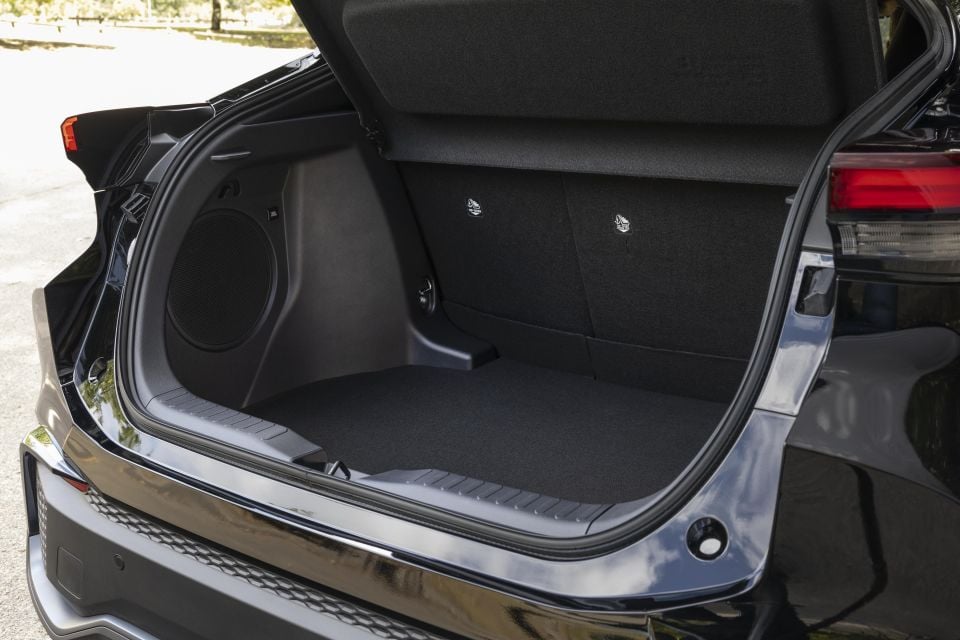
Cargo capacity differs slightly between variants. The 2WD GXL and Koba quote 388-1155L, while the AWD GR Sport drops that slightly to 362-1134L – keep in mind the GR-S has a second electric motor under the boot floor.
Only the base GXL comes with a space saver spare wheel, while the Koba and GR-S make do with a tyre repair kit.
There are two hybrid powertrains available in the new-generation C-HR.
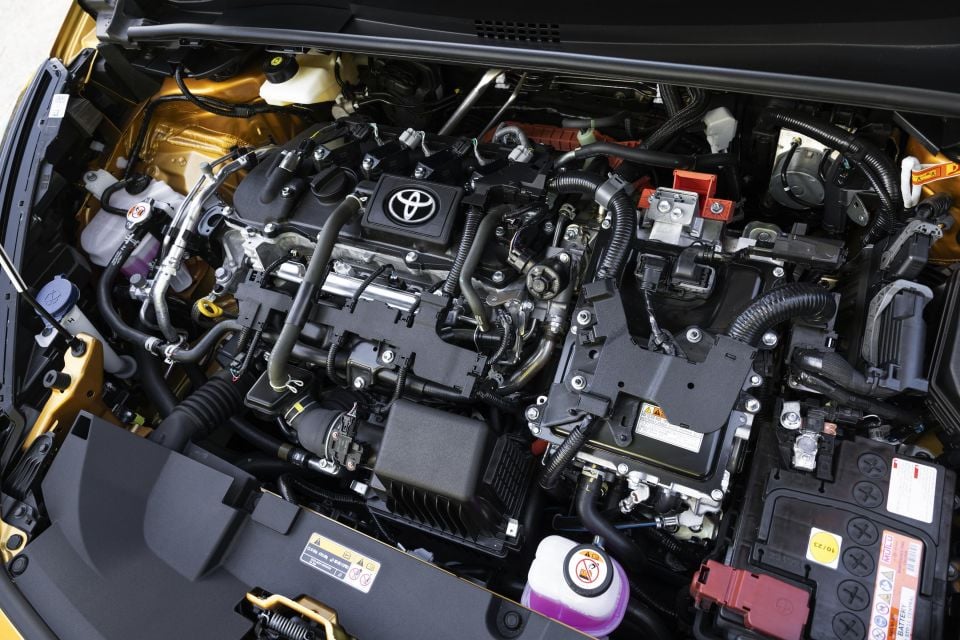
| Model | C-HR 2WD Hybrid | C-HR AWD Hybrid |
|---|---|---|
| Petrol engine | 1.8-litre petrol engine Max power: 72kW @ 5200rpm Max torque: 142Nm @ 3600rpm | 2.0-litre petrol engine Max power: 112kW @ 6000rpm Max torque: 190Nm @ 4400-5200rpm |
| Front electric motor | Max power: 70kW Max torque: 185Nm | Max power: 83kW Max torque: 206Nm |
| Rear electric motor | Max power: 30kW Max torque: 84Nm | |
| Hybrid battery | 4.08Ah lithium-ion | 4.08Ah lithium-ion |
| Combined maximum power | 103kW | 145kW |
| Transmission | 7-speed CVT | 7-speed CVT |
| Maximum speed | 170km/h | 180km/h |
| Fuel consumption claim | 4.0L/100km | 4.1L/100km |
| Fuel tank capacity | 43 litres | 43 litres |
| Fuel rating | 91 RON | 91 RON |
In Europe, there’s also a ‘Plug-in Hybrid 220’ variant that gets a beefier 120kW front electric motor and 13.6kWh li-ion battery pack, quoting system power output of 164kW and WLTP electric range of 64 kilometres (claimed).
It’s not on the cards for Australia just yet, though Toyota Australia hasn’t ruled it out entirely for a future launch.
The original C-HR was one of the early adopters of the TNGA platform and offered a beautifully balanced drive – this new one is even better again.
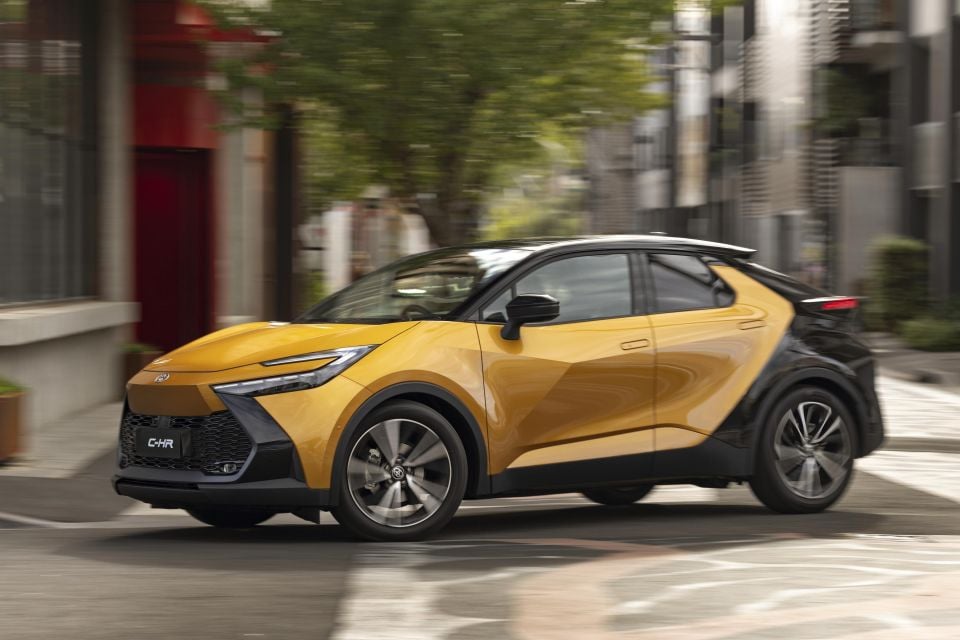
Our launch drive took us from the inner-city out through Victoria’s eastern corridor to Launching Place, covers an city and suburban traffic, highways, and winding B-roads through the hills.
My first leg of the drive was in the mid-spec Koba, which gets an upgraded 1.8-litre hybrid system making 14 per cent more power than the old one at 103kW, courtesy of a new hybrid transaxle and power control unit, as well as a beefier battery pack which runs lithium-ion chemistry compared to the old nickel metal hydride unit.
The extra grunt is noticeable, with better electrical assistance at normal speeds and then a bit more strength when getting onto the freeway. It’ll also spend more time in EV mode thanks to the more energy dense battery and stronger electric motor.
With that said, the base C-HR is no performance car, and is best driven in a sedate manner to maximise efficiency and refinement. You’ll reap the benefits in fuel savings too – a cool widget in the instrument cluster will also tell you your ratio of EV driving, which was showing between 60 and 80 per cent in the Koba.
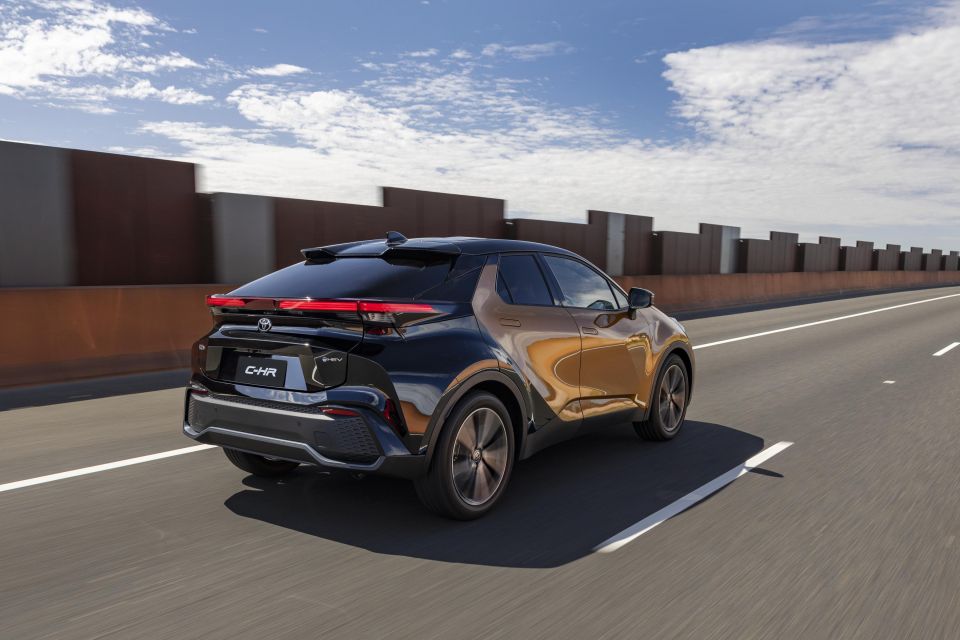
It’s nicely settled on the highway too, with a full suite of active assistance to take the load off longer stints.
Toyota’s semi-autonomous highway assistant does an admirable job at maintaining a safe distance from the vehicle in front while remaining centred in your lane.
There is the odd occasion where it tugs a little too much at the wheel and it may be a little conservative with the distance from a car entering the lane ahead, but it’s still intuitive.
All versions of the C-HR also come standard with blind-spot monitoring and rear cross-traffic alert which is handy given the coupe styling and large C-pillars.
It also ties in with the ambient lighting – it’ll glow red when it detects an oncoming vehicle, and will do similar for the Safe Exit Assist function to go with the audible warning.
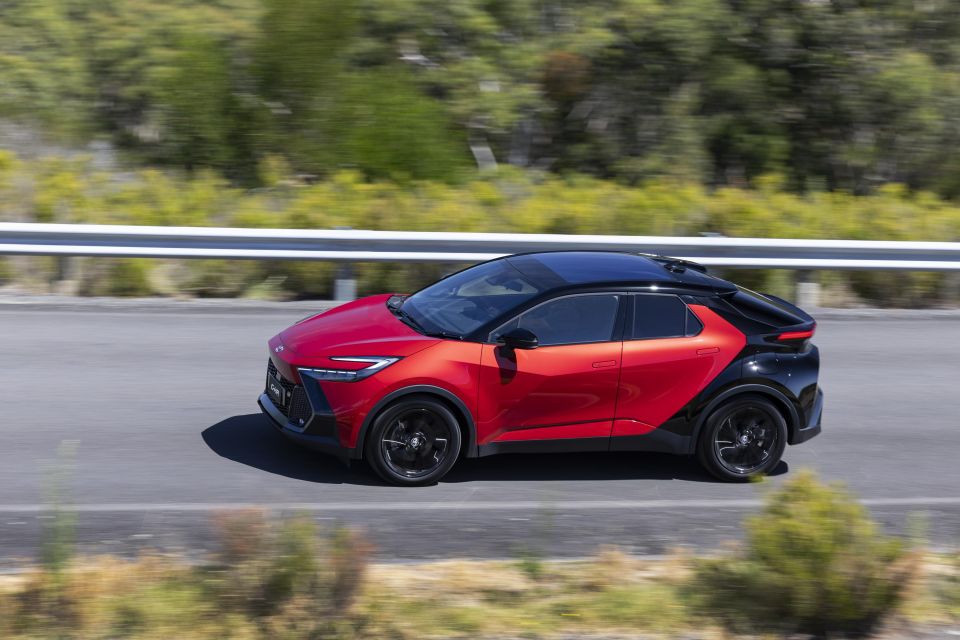
Our time in both the Koba and GR Sport also revealed the excellent ride and handling balance baked into this little crossover.
Like the last generation, the new C-HR offers fluid and accurate steering which makes it really nice to pilot both in town, on the freeway, and on winding country roads. It has a very upmarket and European feel to it.
Couple that with a sweet chassis that offers deft handling and a nicely resolved ride across all scenarios, and you have a vehicle that’s relaxing and comfortable.
The turn-in is sharp and body control well sorted, giving off the more athletic DNA Toyota is pitching, however I’d argue both drivetrain variants lack the spark required for proper engagement particularly on higher speed roads.
A slurring CVT – even if Toyota claims it has seven artificial speeds – is never going to be as fun to drive as something like a similarly priced Volkswagen T-Roc with a DSG dual-clutch auto. The GR Sport doesn’t even have paddle shifters.
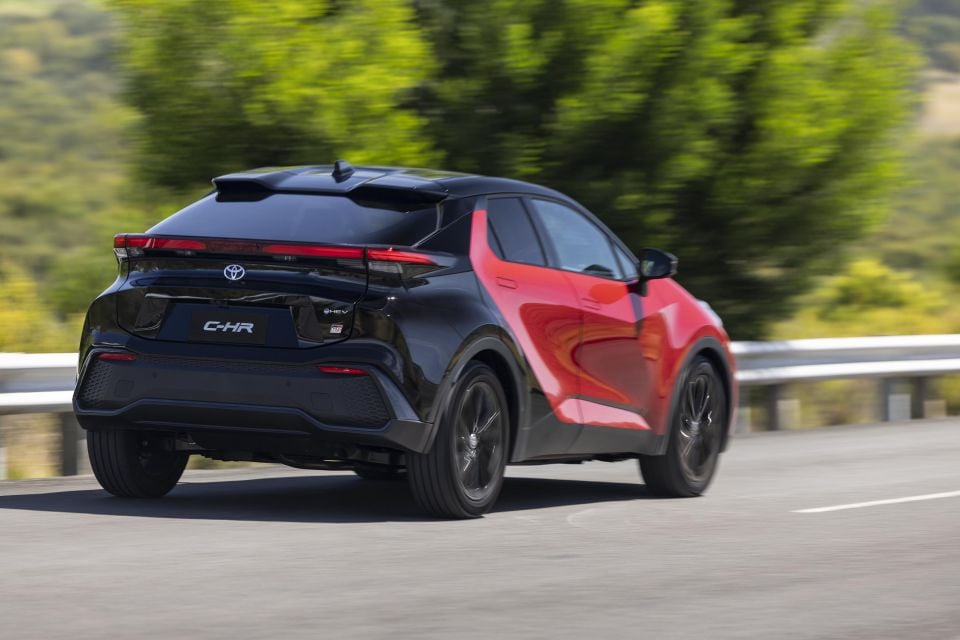
In saying that, the extra kick from the beefier 2.0-litre hybrid system is notable and welcomed, and you can really feel it in the initial response thanks to the additional e-motor at the rear which facilitates electrified AWD.
The GR Sport builds speed nicely but it’s not as quick as the aforementioned T-Roc or something like a Hyundai Kona N Line 1.6T. Like I mentioned earlier, the CVT isn’t a particularly inspiring transmission and there’s no paddles or a a manual mode either.
For me this is a key reason why I don’t think you really need to upgrade to the GR Sport. Unless you really need the extra grunt or AWD, the C-HR 2WD Hybrid in GXL and Koba trims is substantially cheaper and is still nice to drive.
Regardless of the version you choose, you’ll enjoy excellent fuel consumption that could see you travel up to 1000 kilometres between fills. Both the Koba and GR Sport versions we tested were returning an indicated figure around the 5.0L/100km mark, despite extended freeway stints and some more dynamic driving.
On a secondary loop with the Koba in town the following day, the C-HR returned high 3.0s and low 4.0s which is a better indicator of real-world daily scenarios for most people. Worth noting also is the small 43-litre fuel tank across the range will happily run on cheaper 91 RON unleaded.
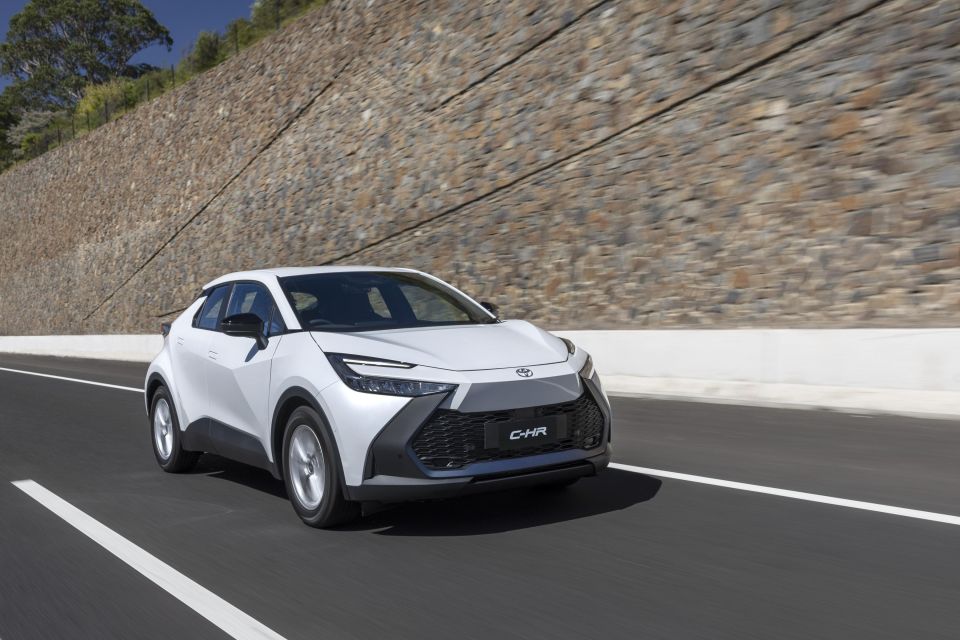
Where expert car reviews meet expert car buying – CarExpert gives you trusted advice, personalised service and real savings on your next new car.
Lastly, overall refinement was generally quite good in the Koba and GR Sport.
You do get a bit of tyre roar over rougher road surfaces, but the C-HR does a good job at keeping the cabin subdued and if you need some extra ambient noise to drown out the outside world the eight-speaker JBL premium audio system in the Koba and GR Sport works well.
Even noise from the petrol engines is subdued compared to other Toyota hybrid product, though the rumbly engine note of the Atkinson cycle motors is another reason not to push these too hard.
GXL, Koba, and GR Sport trim grades carryover, though the GR Sport now serves as the halo rather than being an equivalent to the Koba as was the case with the previous generation.
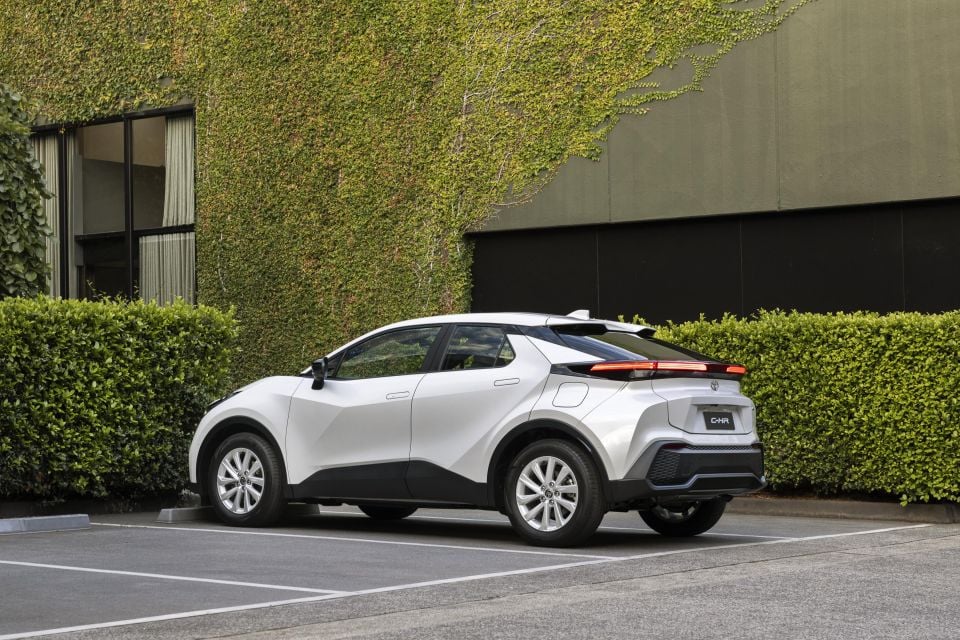
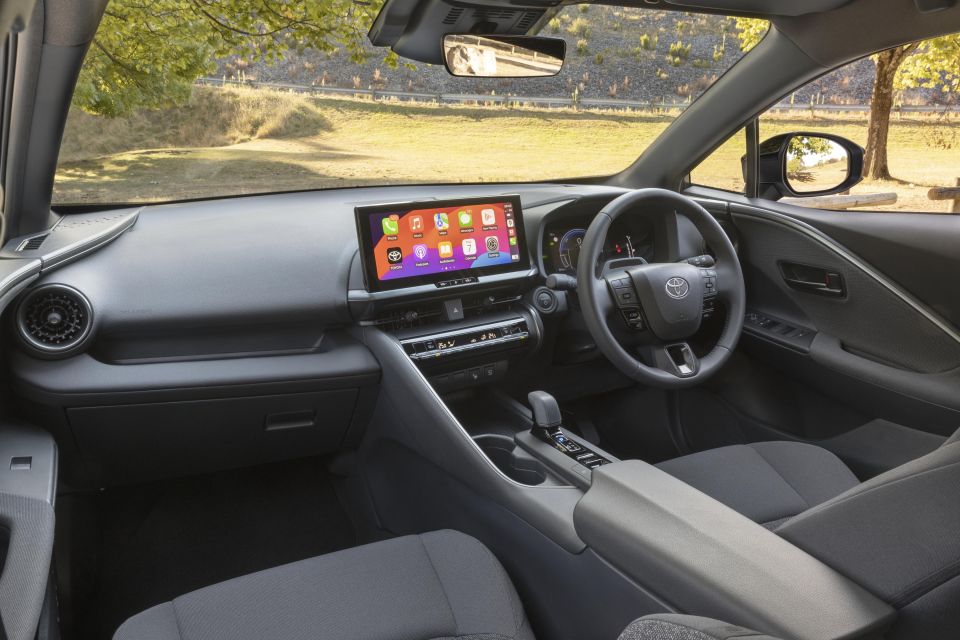
C-HR GXL highlights:
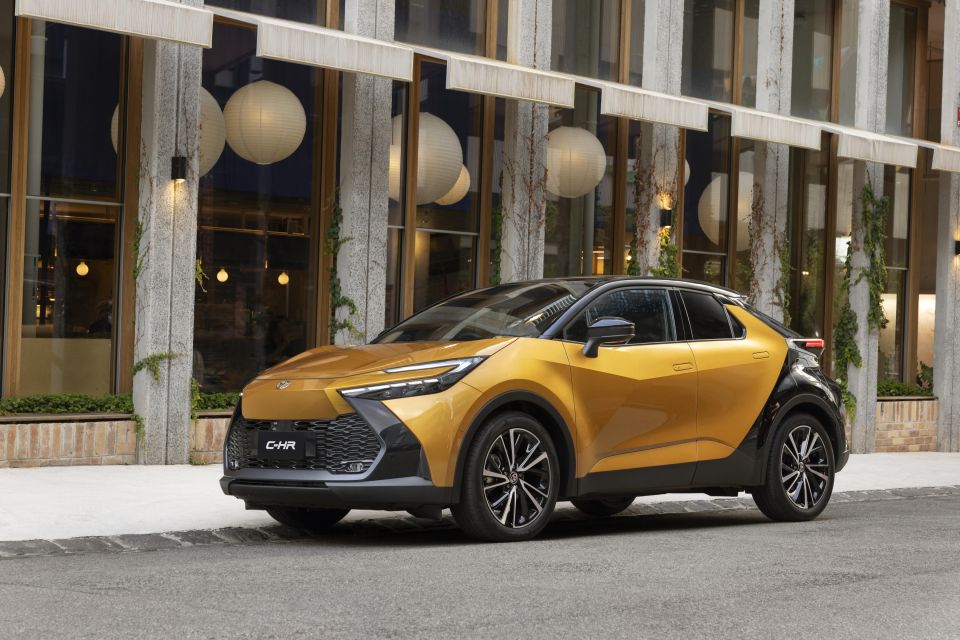

C-HR Koba adds:


C-HR GR Sport adds:
The C-HR has fairly limited optional items, limited to higher grades.
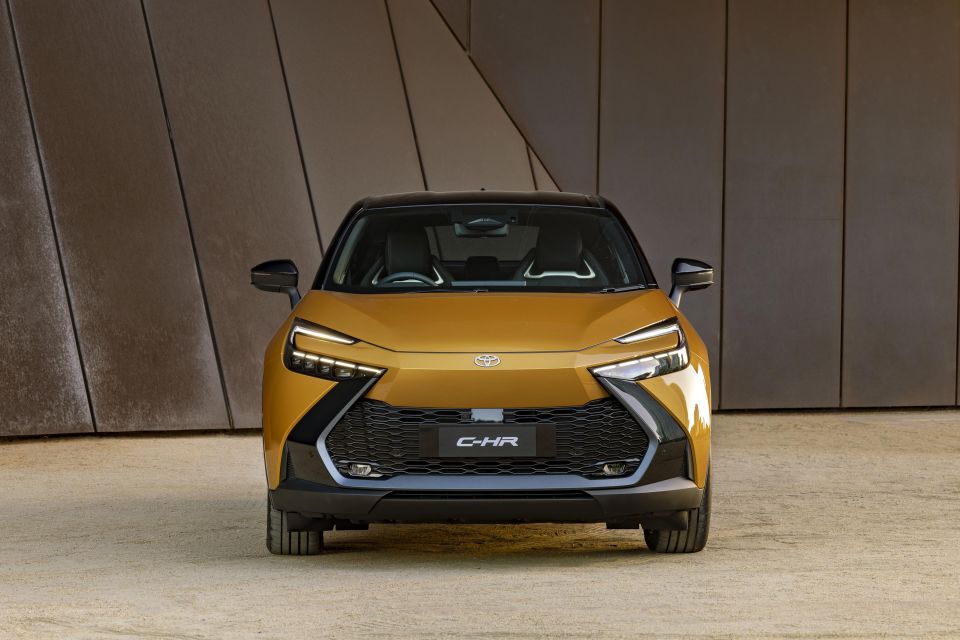
The new Toyota C-HR is currently untested and unrated by ANCAP and Euro NCAP.

Standard safety equipment includes:
The C-HR is covered by Toyota’s five-year, unlimited-kilometre new vehicle warranty.
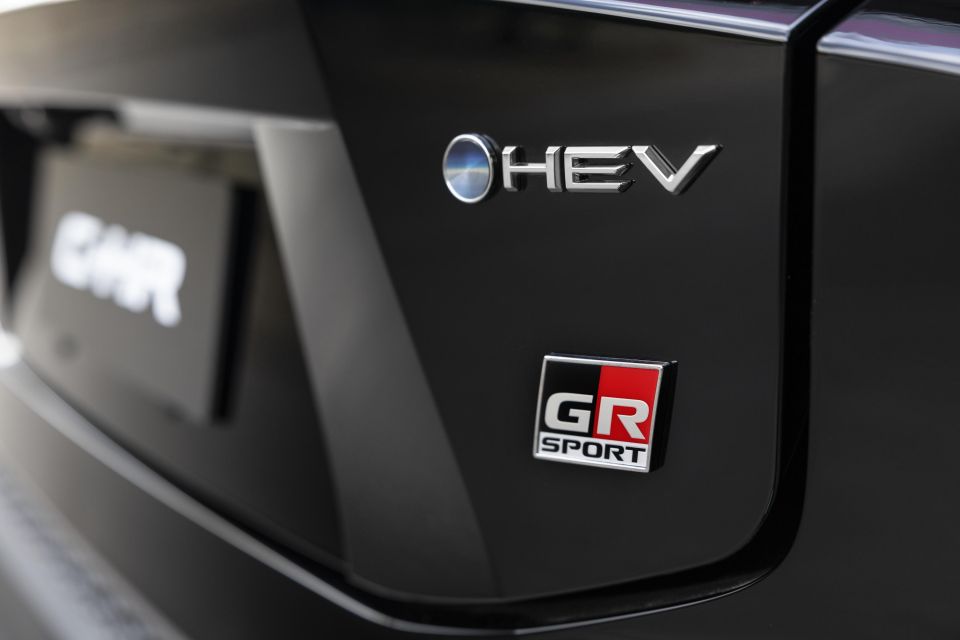
Further, Toyota offers an additional two years of engine and driveline warranty if you stick to your vehicle is “properly serviced and maintained as per the Warranty and Service book”, and will guarantee the hybrid battery for up to 10 years under the same maintenance conditions.
Five years of capped-price servicing is offered too, with intervals of 12 months or 15,000 kilometres – whichever comes first. Each visit costs $250, totalling $1250 for the first five years of ownership.
Just one year of Toyota Connected Services is included with purchase, with monthly paid subscriptions required after that initial 12-month period for various net-based features. For the full breakdown, click here.
Buy your new car without the stress. It's fast, simple and completely free.

Great service from Travis and team, second time I have used this business would not hesitate to recommend them to anyone
Craig C.
Purchased a Ford Ranger in Sunshine Coast, QLD
CarExpert helped Craig save $7,224 on his Ford Ranger, now let us save you on your next new car.
Get your BEST priceIf you’re the kind of person that sees Toyota as ‘boring’, you can’t level that criticism at the new C-HR.
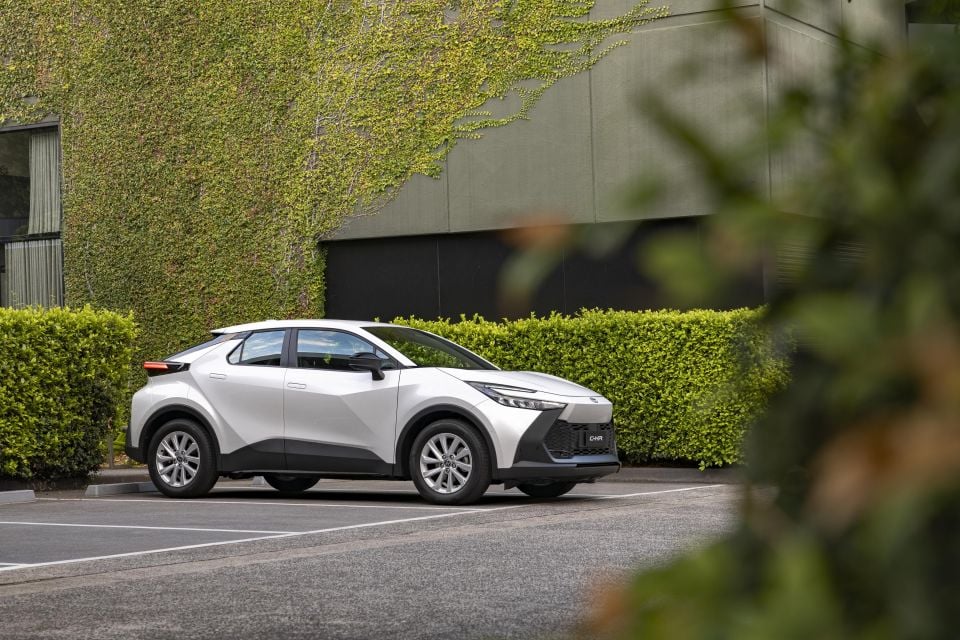
With concept car looks (look at it next to the C-HR Prologue), super efficient drivetrains, and nice range of variants with competitive equipment levels, the second generation crossover coupe is a solid offering that picks up where its predecessor left off.
Prices are up substantially across the board, but that’s also testament to how competitive the old one was. When you take into account the hybrid range, as well as the increase in equipment and tech, the C-HR isn’t all that bad relative to an increasingly pricey segment.
Most rivals from Asian brands are playing in the same price bracket these days, at least with respect to the GXL and Koba. It’s also way more interesting and premium-feeling than the related Corolla Cross, even if it gets the 2.0-litre hybrid as an option on all variants.
The upmarket cabin design and finishes as well as the sporty bucket seats all give off a really premium look and feel. While the Lexus UX is almost equally distinctive in design, its recent repositioning sees even the cheapest one priced in line with the C-HR GR Sport.




For me the Koba is the easy pick of the range. It bisects the GXL and Koba on price, offers the tech and convenience features headlining this new generation, and it’s also customisable with the Two-Tone Plus paint options.
It’ll be interesting to see how Australians receive the new C-HR. If the old one was already niche, this new one is almost exclusive, at least in how it looks and the level of exterior personalisation on offer.
If you’re looking already at a high-spec Corolla Cross Hybrid or even a RAV4 Hybrid and don’t necessarily don’t need the space, the C-HR could be a funky ticket into the SUV brigade that doesn’t force you to shell out on a premium equivalent.
Plus, while the initial buying price is high, the cheap ongoing running costs and Toyota’s penchant for long-term reliability mean that there’s some added peace of mind that may not come with other style-led offerings.
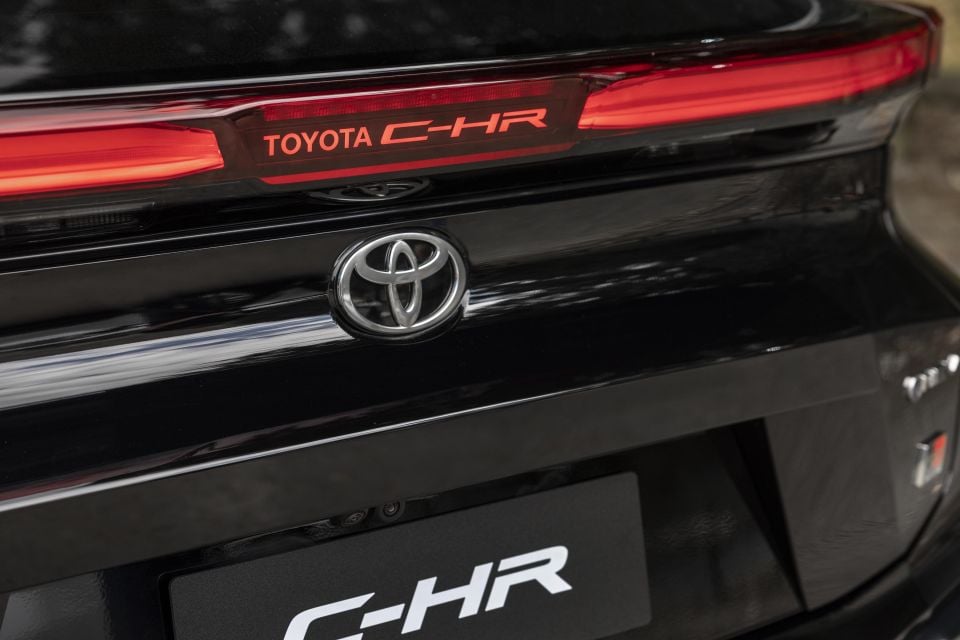
Click the images for the full
MORE: Buy a Toyota C-HR MORE: Everything Toyota C-HR
Where expert car reviews meet expert car buying – CarExpert gives you trusted advice, personalised service and real savings on your next new car.
James is an automotive journalist based in Melbourne, Australia. Before joining CarExpert.com.au in 2020, James has worked at leading auto media outlets including Carsales and CarAdvice, as well as at Pulse agency for Ford Australia's communications team. In 2019 James made Mumbrella's 'Top 20 most prolific web authors in Australia' list after publishing 1,360 articles between March 1, 2018 and February 28, 2019 for CarAdvice. James is also an Ambassador for Drive Against Depression – an Australian charity whose mission is to support mental wellness through the freedom of driving and a shared love of cars.


Josh Nevett
1 Month Ago
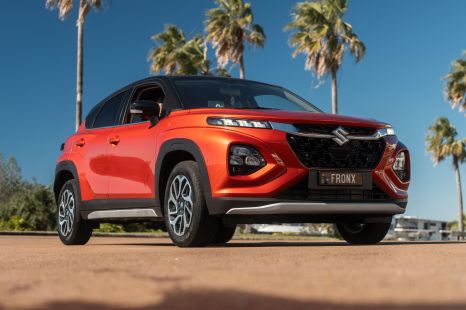

William Stopford
1 Month Ago


Matt Campbell
1 Month Ago
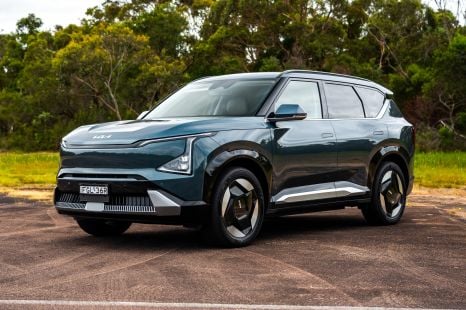

James Wong
27 Days Ago


CarExpert.com.au
20 Days Ago
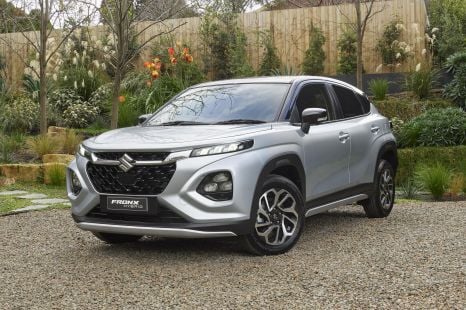

William Stopford
11 Days Ago